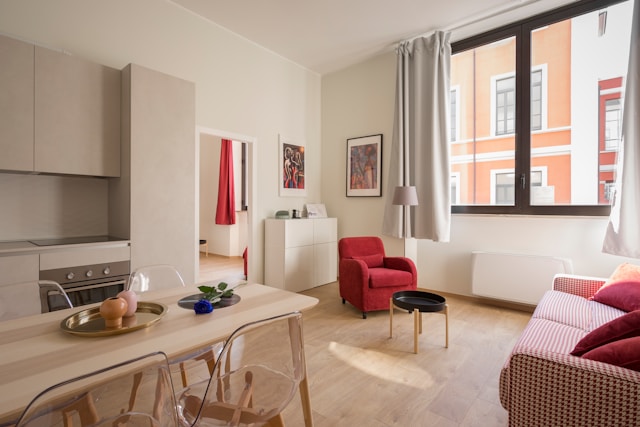Navigating legal matters is like solving a puzzle, finding all of its pieces is important to creating the picture. No matter if you’re starting a business, buying your first home, or facing an unexpected dilemma, there’s always someone out there ready and waiting to help. Don’t panic if you feel lost among all the legal terminology or roles, that’s where this blog comes in. In this blog, we will identify which specialized professionals and complementary services could best help with your situation.

Photo by Tingey Injury Law Firm on Unsplash
Starting a Business? Call a Corporate Lawyer
Starting your own business is exciting but can also be checkered with legal risks. Corporate lawyers offer invaluable help in the form of contract drafting and trademark application, they ensure it all gets off the ground legally and safely. They can advise on creating the appropriate structure of your company (LLC or corporation), providing tailored advice specific to your venture as well as partnership agreements, vendor contracts and employee-related policies to comply with labor laws.
Perfect Pairing Service
Partnering a corporate lawyer and accountant specializing in small businesses is an effective way to streamline operations. While a corporate lawyer ensures your business structure, contracts, policies meet legal requirements while an accountant handles taxes and financial compliance needs for your venture. Together these experts form a solid foundation that allows you to focus on expanding and growing with confidence. From forming an LLC or navigating tax obligations, their expertise can help set your venture up for success from day one.
Buying or Selling Property? Enter the Real Estate Attorney
Buying or selling real estate requires intricate legal processes that must be managed correctly to protect both parties involved and your interests. A real estate attorney will make the transaction seamless while looking after their client’s best interests. This is done by reviewing sales contracts, conducting title searches, facilitating closing processes and handling any real estate disputes such as zoning issues or landlord-tenant disagreements that may arise during this process.
Perfect Pairing Service
Real estate attorneys often collaborate with property inspectors to offer their clients comprehensive services that ensure the physical condition aligns with legal documentation and guarantees. This partnership ensures that clients get quality assurance. Working closely together, attorneys and inspectors can identify any potential issues, such as structural defects or discrepancies in property descriptions, before they become major issues for clients. This proactive approach safeguards your investments while making the transactions run more smoothly. Particularly at closings when coordination adds another level of assurance to ensure accuracy and ensure a seamless transaction process. Ultimately, teamwork between real estate legal services and inspection services exemplifies their diligent approach.
Facing Family Issues? Trust a Family Lawyer
Family law can be sensitive and emotional. From divorce proceedings to child custody agreements or adoption proceedings, having the support of an experienced and compassionate family lawyer is invaluable when facing complex personal struggles. They protect your rights through negotiations or court representation while representing clients during negotiations or litigation as necessary. Not forgetting spousal support issues.
Perfect Pairing Service
People experiencing emotionally draining legal situations require a supportive network to help them cope. Involvement with family-focused therapists during difficult life events like divorce, child custody disputes or separation is invaluable in terms of offering them guidance through any emotional turmoil caused by these changes. Providing a safe space to process complex emotions while building resilience for moving forward positively with life’s challenges. Partnering up with an advocate allows these professionals to prioritize emotional well-being making it easier to handle stress and uncertainty during these circumstances.
Caught on the Wrong Side of the Law? You Need a Criminal Defense Attorney
If you have been accused of any crime, no matter how minor, having access to an experienced criminal defense lawyer is important in protecting your rights and ensuring a strong defense. These professionals assess evidence, negotiate plea deals, and represent clients during court proceedings for the best representation (from DUI charges and serious felonies), all to minimize consequences and preserve legal integrity.
Perfect Pairing Service
Bail bondsmen play a big part in the justice system, working alongside criminal defense attorneys to secure your release before trial. When facing charges, working with a reliable bail bonds service can give you temporary freedom while you plan your defense strategy, helping reduce the stress from detention. Working together, they strive to simplify pre-trial processes so you have time to prepare effectively for court obligations without lengthy detention periods weighing on you. Choosing a reliable service is very important in protecting your rights.
Estate Planning on Your Mind? Consult an Estate Lawyer
Securing wealth for future generations requires strategic and detailed legal planning, which is best left to professionals with expertise in wills, trusts and probate law. An estate lawyer ensures your assets are distributed as you wish and helps clients avoid excessive taxes or probate hassles. They may also serve as power of attorney when making medical and financial decisions on your behalf.
Perfect Pairing Service
Estate lawyers collaborate closely with financial planners to develop comprehensive plans that are tailor-made to your specific needs. Together they ensure your wealth is managed effectively while mitigating risks such as excessive taxes or legal disputes. Through aligning legal and financial strategies they also help safeguard your assets while creating solutions that are both practical and legally sound. Whether creating trusts, wills or power of attorney designations this partnership ensures every detail is addressed allowing your wealth to expand while remaining legally protected.

Photo by Melinda Gimpel on Unsplash
Workplace Issues? Employment Lawyers Have Your Back
Without proper legal representation, workplace disputes can quickly escalate without legal guidance. Employment lawyers specialize in handling workplace harassment claims such as sexual harassment, wrongful terminations and wage discrepancies as well as discrimination claims for employers. They also draft employment contracts, establish workplace compliance policies and reduce future liabilities to help facilitate a peaceful working environment.
Perfect Pairing Service
Combining HR consulting services and employment law expertise ensures that company policies adhere to legal requirements while creating a fair working environment.
Launching a Tech Start-Up? Engage an Intellectual Property (IP) Lawyer
Intellectual property lawyers specialize in protecting tech start-ups and innovators’ creations from theft or infringement. They also help you through registering ideas, protecting against infringement and defending them if needed, whether that means software development, an invention or brand logos.
Perfect Pairing Service
Work closely with branding consultants to develop an eye-catching identity while your attorney secures exclusive rights for any intellectual property you possess.
Caught in an International Mess? Hire an Immigration Lawyer
Immigration attorneys provide important guidance through complex legal processes associated with international travel and residency applications, from visas to green cards applications and deportation defense cases. Whether your company employs international talent or people who wish to obtain permanent residency status, immigration lawyers serve as invaluable guides through complex legal processes.
Perfect Pairing Service
Language interpreters and cultural mediators can be important in helping immigration cases to proceed smoothly.
Planning a Wedding or Divorce? Consider a Prenuptial Agreement Lawyer
Although not the most romantic topic, prenuptial agreements can bring clarity for couples entering marriage. A lawyer specializing in prenuptial agreements drafts contracts that address asset division and financial issues should the relationship end prematurely. Conversely, divorce attorneys with expertise in handling critical matters such as alimony or asset division ensure fair proceedings when couples part ways.
Perfect Pairing Service
Financial advisors often partner with prenuptial lawyers to craft agreements that reflect both current and long-term financial goals of their clientele.
Personal Injury Case? Call a Personal Injury Lawyer
Accidents can leave lasting physical, emotional, and financial scars. Personal injury attorneys specialize in recovering compensation for medical bills, emotional suffering, lost income due to an accident. These can all be caused by car accidents, workplace injuries, product liability claims or medical malpractice suits. They will be by your side doing negotiations with insurers or court representation if needed.
Perfect Pairing Service
Medical experts who specialize in injuries caused by accidents often collaborate with personal injury lawyers to build strong claims with concrete evidence.
Need Help with Tax Issues? Seek a Tax Attorney
Tax attorneys specialize in navigating the intricate terrain of IRS regulations and making compliance easier while saving you money and headaches. Something highly useful for high net-worth people, business owners and anyone else with complex finances.
Perfect Pairing Service
For maximum efficiency when working with a tax attorney, teaming them up with a certified public accountant (CPA). While tax attorneys specialize in legal aspects of tax filings and reporting, CPAs handle detailed financial records to ensure accuracy in filings and reports. Together these experts offer a balanced approach to complex tax issues while safeguarding your finances for long-term success and providing peace of mind. Combining their services provides comprehensive solutions tailored for businesses, estates or people that need professional guidance in financial matters.

Photo by The New York Public Library on Unsplash
Conclusion
Finding the appropriate legal expert can make all of the difference when faced with difficult life situations. From tax attorneys and CPAs, to lawyers specialized in personal or business law matters, understanding each professional’s strengths ensures you’re equipped to face any challenge head on. Spending the time to assess your own specific needs and getting legal counsel can bring peace of mind and an enhanced foundation for future success. Legal expertise should not just be seen as a resource, it can become your weapon against threats to your interests and help reach goals faster.








